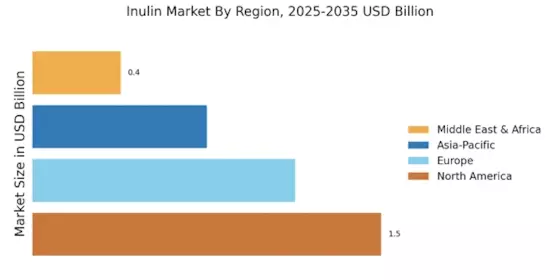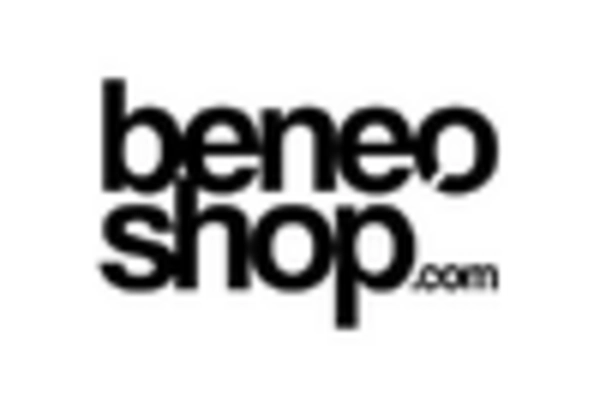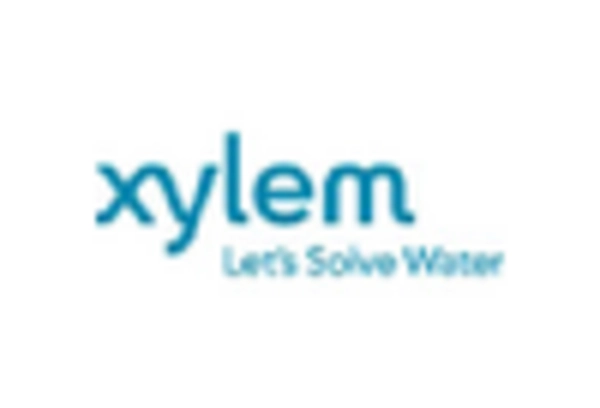Increasing Health Awareness
The Inulin Market is experiencing a notable surge in demand due to increasing health awareness among consumers. As individuals become more conscious of their dietary choices, there is a growing preference for natural and functional ingredients. Inulin Market, a soluble fiber derived from chicory root and other plants, is recognized for its prebiotic properties, which support gut health and overall well-being. This trend is reflected in market data, indicating that the demand for dietary fibers, including inulin, is projected to grow at a compound annual growth rate of approximately 8% over the next five years. Consequently, manufacturers are increasingly incorporating inulin into various food and beverage products to cater to health-conscious consumers, thereby driving growth in the Inulin Market.
Growth in Functional Beverages
The Inulin Market is witnessing significant growth in the functional beverages segment, driven by consumer demand for health-enhancing drinks. Functional beverages, which include smoothies, juices, and fortified waters, are increasingly incorporating inulin due to its beneficial properties. Inulin Market not only enhances the nutritional profile of these beverages but also improves their texture and mouthfeel. Recent market data indicates that the functional beverage market is projected to grow at a CAGR of 7.5% through 2026, with inulin playing a crucial role in this expansion. As manufacturers seek to innovate and differentiate their products, the inclusion of inulin is likely to become more prevalent, thereby contributing to the overall growth of the Inulin Market.
Regulatory Support for Dietary Fibers
The Inulin Market is positively influenced by regulatory support for dietary fibers, which are increasingly recognized for their health benefits. Various health organizations and government bodies are promoting the consumption of dietary fibers as part of a balanced diet, leading to greater acceptance and incorporation of inulin in food products. For instance, dietary guidelines in several regions recommend higher fiber intake, which has prompted food manufacturers to reformulate their products to include more fiber-rich ingredients like inulin. This regulatory backing is expected to bolster the market, as it encourages innovation and product development within the Inulin Market, ultimately benefiting consumers seeking healthier options.
Rising Popularity of Plant-Based Diets
The Inulin Market is benefiting from the rising popularity of plant-based diets, which emphasize the consumption of whole, unprocessed foods. As more consumers adopt vegetarian and vegan lifestyles, the demand for plant-derived ingredients, such as inulin, is likely to increase. Inulin Market serves as an excellent alternative to traditional sweeteners and thickeners, making it a valuable ingredient in plant-based food formulations. Market analysis suggests that the plant-based food sector is expected to reach a valuation of over 74 billion dollars by 2027, further propelling the demand for inulin as a functional ingredient. This shift towards plant-based diets not only aligns with health trends but also reflects a broader movement towards sustainability, thereby enhancing the relevance of the Inulin Market.
Technological Advancements in Food Processing
The Inulin Market is experiencing a transformation due to technological advancements in food processing techniques. Innovations such as improved extraction methods and processing technologies have enhanced the efficiency and quality of inulin production. These advancements not only reduce production costs but also improve the functional properties of inulin, making it more appealing to food manufacturers. As a result, the availability of high-quality inulin is likely to increase, supporting its incorporation into a wider range of products. Market trends indicate that the food processing industry is evolving rapidly, with a focus on clean label products and natural ingredients, which positions inulin favorably within the Inulin Market.


















Leave a Comment